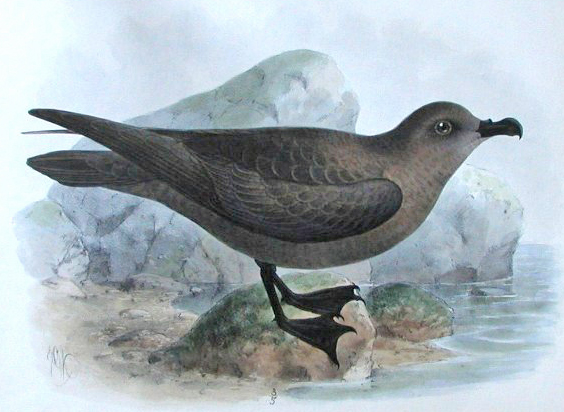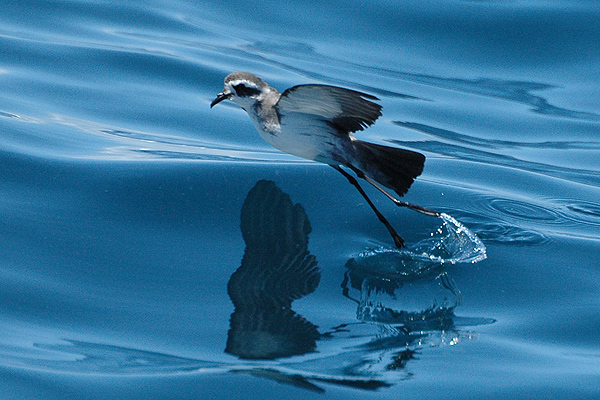|
Storm-petrel
Storm petrel or stormy petrel may refer to one of two bird families, both in the order Procellariiformes, once treated as the same family. The two families are: * Northern storm petrels (''Hydrobatidae'') are found in the Northern Hemisphere, although some species around the Equator The equator is the circle of latitude that divides Earth into the Northern Hemisphere, Northern and Southern Hemisphere, Southern Hemispheres of Earth, hemispheres. It is an imaginary line located at 0 degrees latitude, about in circumferen ... dip into the south. * Southern storm petrels (Oceanitidae) are found in all oceans, although only white-faced storm petrel (breeding in the North Atlantic, in addition to the Southern Ocean) and Wilson's storm petrels (on migration) are found in the Northern Hemisphere. References {{Authority control Set index articles on animal common names ... [...More Info...] [...Related Items...] OR: [Wikipedia] [Google] [Baidu] |
Markham's Storm Petrel
Markham's storm petrel (''Hydrobates markhami'') is a seabird native to the Pacific Ocean around Peru, Chile, and Ecuador. The species is named after British explorer Albert Hastings Markham, who collected the specimen on which the scientific description was based. It is a large and slender storm petrel, with a wingspan between . Its plumage is black to sooty brown with a grayish bar that runs diagonally across the upper side of the wings. A member of the family Hydrobatidae, the northern storm petrels, the species is similar to the black storm petrel (''Hydrobates melania''), from which it can be hard to distinguish. A colonial breeder, this storm petrel nests in natural cavities in salt crusts in northern Chile and Peru; ninety-five percent of the known colonies are found in the Atacama Desert. The first colony was only reported in 1993, and it is expected that more colonies are yet to be discovered. Pairs produce one egg per season, which is laid on bare ground without any n ... [...More Info...] [...Related Items...] OR: [Wikipedia] [Google] [Baidu] |
European Storm Petrel
The European storm petrel (''Hydrobates pelagicus''), also known as British storm petrel, or just storm petrel, is a species of seabird in the northern storm petrel family, Hydrobatidae. The small, square-tailed bird is entirely black except for a broad, white rump and a white band on the under wings, and it has a fluttering, bat-like flight. The large majority of the population breeds on islands off the northern coasts of Europe, with the greatest numbers in the Faroe Islands, United Kingdom, Ireland, and Iceland. The Mediterranean population is a separate subspecies whose strongholds are Filfla Island (Malta), Sicily, and the Balearic Islands. This subspecies is indiscernible at sea from its Atlantic relatives. The storm petrel nests in crevices and burrows, sometimes shared with other seabirds or rabbits, and lays a single white egg, usually on bare soil. The adults share the lengthy incubation and both feed the chick, which is not normally brooded after the first week. Thi ... [...More Info...] [...Related Items...] OR: [Wikipedia] [Google] [Baidu] |
Wilson's Storm Petrel
Wilson's storm petrel (''Oceanites oceanicus''), also known as Wilson's petrel, is a small seabird of the austral storm petrel family Oceanitidae. It is one of the most abundant bird species in the world and has a circumpolar distribution mainly in the seas of the southern hemisphere but extending northwards during the summer of the northern hemisphere. The world population was estimated in 2022 as stable at 8 to 20 million birds. In 2010 it had been estimated at 12–30 million. A 1998 book had estimated more than 50 million pairs. The name commemorates the Scottish-American ornithologist Alexander Wilson (ornithologist), Alexander Wilson. The genus name ''Oceanites'' refers to the mythical Oceanids, the three thousand daughters of Tethys (mythology), Tethys. The species name is from Latin ''oceanus'', "ocean". Taxonomy Originally described in the genus ''Procellaria'' it has been placed under the genus ''Oceanites''. Two or three subspecies are recognized and one population '' ... [...More Info...] [...Related Items...] OR: [Wikipedia] [Google] [Baidu] |
White-faced Storm Petrel
The white-faced storm petrel (''Pelagodroma marina''), (Māori language, Māori: ''takahikare'') also known as white-faced petrel or frigate petrel is a small seabird of the austral storm petrel family Oceanitidae. It is the only member of the monotypic genus ''Pelagodroma''. It is widely distributed across the northern and Southern Hemisphere, southern hemisphere, especially around the coastal and open ocean waters of southern Australia, New Zealand, Tristan da Cunha, Cabo Verde, the Canary islands and the Selvagens islands.Underwood, M. (2012). ''Does size matter? Sex differences in white-faced storm petrels’ ecology'' (Doctoral dissertation, Deakin University). Subspecies and their distributions Here are six recognised subspecies, breeding in island colonies through subtropical to subantarctic regions of the Atlantic Ocean, Atlantic, Indian Ocean, Indian and south-western Pacific Oceans in both hemisphere: *''P. m. albiclunis'' , 1951 – Kermadec Islands *''P. m. dulcia ... [...More Info...] [...Related Items...] OR: [Wikipedia] [Google] [Baidu] |
Leach's Storm Petrel
Leach's storm petrel or Leach's petrel (''Hydrobates leucorhous'') is a small seabird of the tubenose order. It is named after the British zoologist William Elford Leach. The scientific name is derived from Ancient Greek. ''Hydrobates'' is from ''hydōr'' "water", and ''batēs'' "walker", and ''leucorhous'' is from ''leukos'', "white" and ''orrhos'', "rump". It was formerly defined in the genus '' Oceanodroma'' before that genus was synonymized with '' Hydrobates''. It breeds on inaccessible islands in the colder northern areas of the Atlantic and Pacific Oceans. It nests in colonies close to the sea in well concealed areas such as rock crevices, shallow burrows, or even logs. It lays a single white egg, which often has a faint ring of purple spots at the large end. This storm petrel is strictly nocturnal at the breeding sites to avoid predation by gulls and skuas, and even avoids coming to land on clear, moonlit nights. The largest colony of Leach's storm petrels can be found o ... [...More Info...] [...Related Items...] OR: [Wikipedia] [Google] [Baidu] |
Procellariiformes
Procellariiformes is an order (biology), order of seabirds that comprises four family (biology), families: the albatrosses, the Procellariidae, petrels and shearwaters, and two families of storm petrels. Formerly called Tubinares and still called tubenoses in English, procellariiforms are often referred to collectively as the petrels, a term that has been applied to all members of the order,Warham, J. (1996). ''The Behaviour, Population, Biology and Physiology of the Petrels''. London: Academic Press, or more commonly all the families except the albatrosses.Brooke, 2004. They are almost exclusively pelagic (feeding in the open ocean), and have a cosmopolitan distribution across the world's oceans, with the highest species diversity, diversity being around New Zealand. Procellariiforms are seabird colony, colonial, mostly nesting on remote, predator-free islands. The larger species nest on the surface, while most smaller species nest in natural cavities and burrows. They exhibit ... [...More Info...] [...Related Items...] OR: [Wikipedia] [Google] [Baidu] |
Austral Storm Petrel
Austral storm petrels, or southern storm petrels, are seabirds in the family Oceanitidae, part of the order Procellariiformes. These smallest of seabirds feed on planktonic crustaceans and small fish picked from the surface, typically while hovering. Their flight is fluttering and sometimes bat-like. Austral storm petrels have a cosmopolitan distribution, being found in all oceans, although only Wilson's storm petrel and white-faced storm petrel are found in the Northern Hemisphere. They are almost all strictly pelagic, coming to land only when breeding. In the case of most petrel species, little is known of their behaviour and distribution at sea, where they can be hard to find and harder to identify. They are colonial nesters, displaying strong philopatry to their natal colonies and nesting sites. Most species nest in crevices or burrows, and all but one species attend the breeding colonies nocturnally. Pairs form long-term monogamous bonds and share incubation and chick-feed ... [...More Info...] [...Related Items...] OR: [Wikipedia] [Google] [Baidu] |
Elliot's Storm Petrel
Elliot's storm petrel (''Oceanites gracilis'') is a species of seabird in the storm petrel family Oceanitidae. The species is also known as the white-vented storm petrel. Retrieved 9 June 2014 There are two subspecies, ''O. g. gracilis'', which is found in the off and , and ''O. g. galapagoensis'', which is found in the waters around the |
Monteiro's Storm Petrel
Monteiro's storm petrel (''Hydrobates monteiroi'') is a seabird species from the storm petrel family, Hydrobatidae. The cryptic species was once considered to be conspecific with the band-rumped storm petrel.M. Bolton, A.L. Smith, E. Gomez-Diaz, V.L. Friesen, R. Medeiros, J. Bried, J.L. Roscales & R.W. Furness (2008) "Monteiro's Storm Petrel ''Oceanodroma monteiroi'': a new species from the Azores" ''Ibis'' 150 (4): 717–727 The species is endemic to the Azores. Taxonomy The existence of a separate species was first hinted at by the discovery of two distinct breeding seasons of ''Hydrobates'' storm-petrels in the Azores. Both populations were initially thought to be of band-rumped storm petrels; however, one population breeds during the cool season, and the other during the hot season. A closer study of these two breeding populations found differences in their morphology and moult. Examination of the mtDNA found that the two populations were indeed genetically isolated, an ... [...More Info...] [...Related Items...] OR: [Wikipedia] [Google] [Baidu] |
Fork-tailed Storm Petrel
The fork-tailed storm petrel (''Hydrobates furcatus'') is a small seabird of the storm petrel family Hydrobatidae. It is the second-most abundant and widespread storm petrel (after Leach's storm petrel) and is the only bird in its family that is bluish-grey in colour. The fork-tailed storm petrel is pelagic, spending up to 8 months in the northern Pacific Ocean. They only return to land to breed, where they nest in a single colony. Their nests can be found in a rock crevice or small burrow, where a single egg is laid. Their breeding range is along the coast of the northern Pacific Ocean, extending from northern California to northeast Asia. They mainly feed on planktonic crustaceans, small fish, and squid, but also consume offal. Similarly to other storm petrels, they forage by picking food off the surface of the water while in flight. Taxonomy The fork-tailed storm petrel was formally described in 1789 by the German naturalist Johann Friedrich Gmelin in his revised and expan ... [...More Info...] [...Related Items...] OR: [Wikipedia] [Google] [Baidu] |
Black Storm Petrel
The black storm petrel (''Hydrobates melania'') is a small seabird of the storm petrel family Hydrobatidae. It is 23 cm in length, with a wingspan of 46–51 cm. Behavior The species breeds seabird colony, colonially on islands off the southern California coast of the United States and off the Baja California peninsula, Baja Peninsula and Gulf of California of Mexico. Nesting sites are usually in rock crevices, occasionally in small burrows in soft earth. It also uses unused burrows from auklets. Colonies are attended nocturnal animal, nocturnally in order to avoid predatory birds such as gulls, hawks and owls. Like most petrels, its walking ability is limited to a short shuffle to the burrow. The female lays a single white egg per breeding season, if the egg is lost then it is replaced only rarely. Both parents share incubation duties, incubation lasting around 50 days. The chick is brooded for a few days after hatching until it is able to thermoregulate by itself, a ... [...More Info...] [...Related Items...] OR: [Wikipedia] [Google] [Baidu] |







